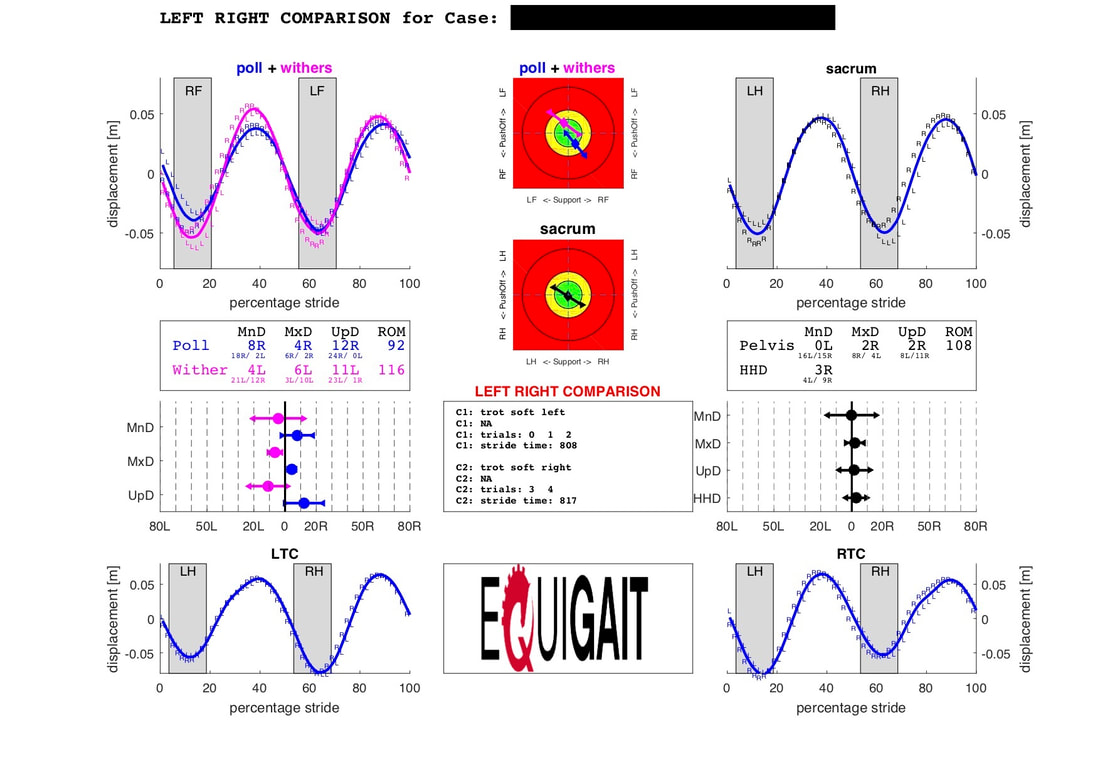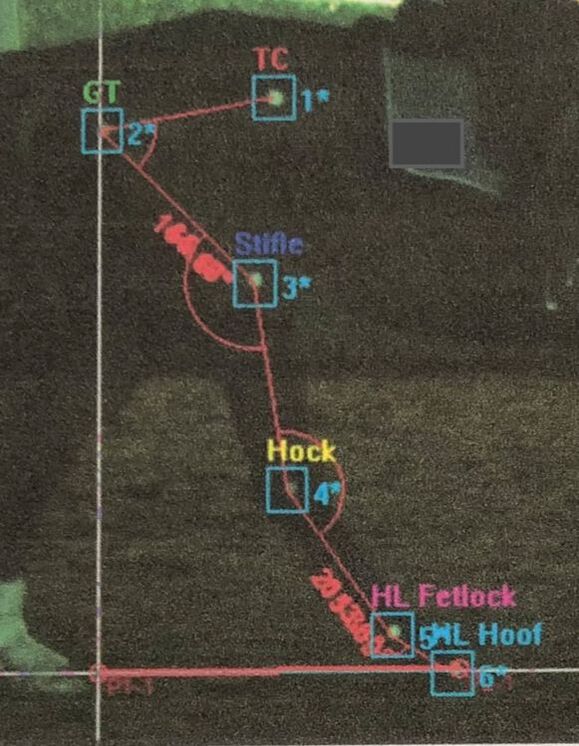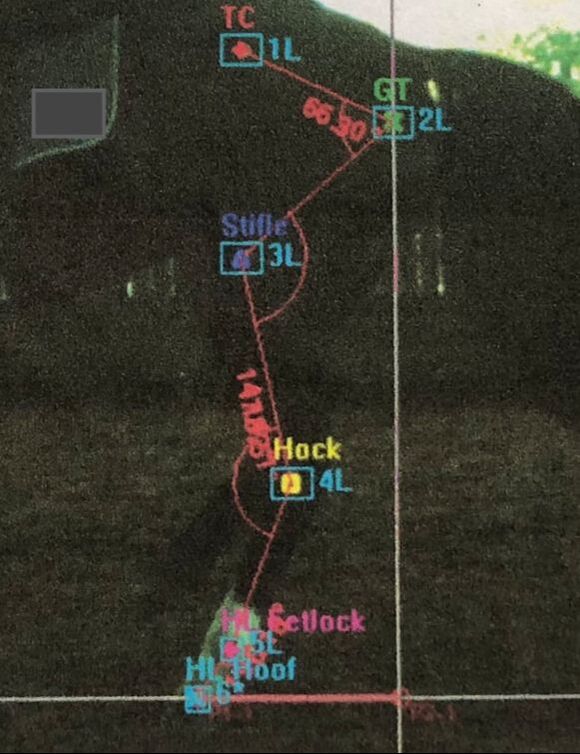|
"Bob" was a 14 year old warmblood gelding competing Prix St George Dressage. His owner had noticed that he had started to have some issues in left canter only - she couldn't quite put her finger on it, but described that the left canter "just didn't feel right". We were asked to do a joint consultation with the vet, as while you could see that the left canter looked different to the right, it was quite difficult to see with the naked eye why this was so. The horse was not positive on any flexion tests or visibly lame at the trot. The vet did not want to waste time or money blocking or imaging regions that weren't relevant, so asked us to use our gait analysis technology to help determine where the problem was coming from. We first trotted Bob in hand, using both the high-speed video with 2D kinematic analysis, and the inertial motion units. We then used the high-speed video with 2D kinematic analysis to compare the left and right canter under saddle. (Learn more about these technologies here). The inertial motion units measure symmetry between the left and right sides of the body, and are able to detect if an asymmetry is occurring in a particular limb during the push off or support phase (or both) of the gait cycle. With 2D kinematic analysis we are able to measure joint angles, velocity and acceleration of all of the joints in each limb.
So what did we do with this information?
This is where the team approach is so important. The gait analysis allowed us to determine in which limb and which area the problem was occurring. Based on the information from the gait analysis regarding protraction distance, joint angles and velocity, the vet was able to deduce where the problem was likely occurring and upon scanning they found very early changes in the affected soft tissue. This saved the vet time and the owner money on not having to perform multiple nerve blocks or take images of a number of joints before finding the problem. Finding the changes this early meant that the recovery time for Bob was much faster than if the area continued to be loaded and the issue not investigated until Bob was noticeably lame. In this case the injury would likely have been worse and he would have probably required a much longer recovery period. The vet and our physiotherapist put in place a management plan for Bob, and we are pleased to report that he fully recovered, his performance issues resolved and he returned very successfully to his dressage career!
1 Comment
|




 RSS Feed
RSS Feed